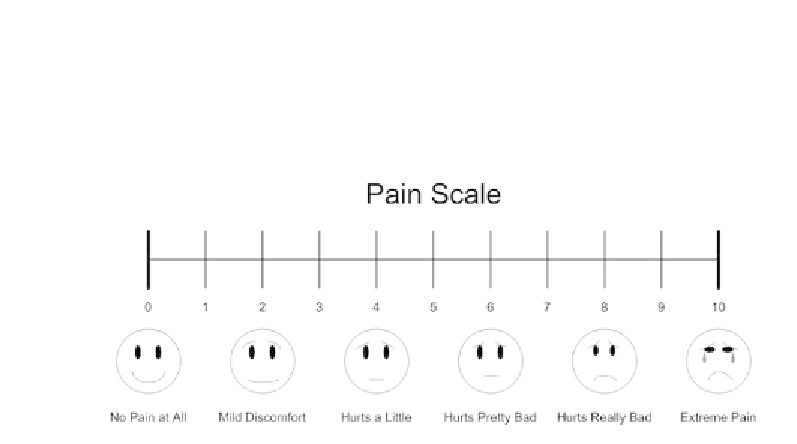Game Development Reference
In-Depth Information
Accuracy
One of the main considerations for establishing a correct level of granularity is
accuracy of differentiation
. This is the level at which we can discern differences
between adjacent measurements. An excellent example of this is hanging in many
hospital and doctor's examination rooms. Medical professionals have standardized
a “pain scale�? to assist in quantifying patients' otherwise (very) subjective reports of
the discomfort they feel (Figure 13.4).
FIGURE 13.4
A typical pain chart runs from 0 (no pain) to 10 (extreme pain).
The granularity of the ratings allows 11 selections. The faces allow 6 ratings.
The pain scale ranges from 0 to 10, which represents the range from “no pain�?
to “extreme pain.�? The patients report the number that corresponds to how they
feel at the moment. The face icons included on most charts are helpful for children
to identify how they feel.
The question that we must ask ourselves is “Why 0 to 10?�? Aside from 10 being
a nice round number, there is a reason the creators of the pain scale designed it with
this granularity. On the 10-point scale, we can differentiate between 6 and 7. The
smallest possible unit on the 10-point scale represents a gradation that we can ac-
tually discern and describe. The 11 selections are no more accurate than our own
ability to sense and rate our pain level. We probably would have no reason to spec-
ify that our pain level was at a 6.5, for example.
Too Many
On the other hand, imagine that the pain scale ran from 0 to 100 instead. The
smallest possible unit on a 100-point scale is one. Can we tell the difference between
60 and 61? We find that one out of 100 units is too small to be able to meaningfully
differentiate the levels of pain.


